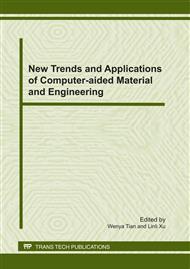p.225
p.230
p.236
p.241
p.246
p.251
p.256
p.261
p.266
An Extensible Business Objects Modeling Framework for Enterprise Resource Planning
Abstract:
As it is common to imbed business objects/rules within the code of traditional ERP systems, the flexibility, scalability of these systems has been greatly restricted. This paper proposes extensible business objects framework, by which service-oriented componentization of business objects are modeling and a homogeneous component enterprise business system is constructed. The framework described in this paper enables enterprises to develop enterprise resource planning systems that systematically map their business logic to externally applied entities called business objects. Practice shows, when using the toolkits supplied by this framework, the ERP systems will be flexible, extensible and easy-to-develop.
Info:
Periodical:
Pages:
246-250
Citation:
Online since:
January 2011
Authors:
Keywords:
Price:
Сopyright:
© 2011 Trans Tech Publications Ltd. All Rights Reserved
Share:
Citation:


